
Neil Ritchie
@neilritchie.bsky.social
Editor: @DefenceToday.com, @MilitaryJournal.net and @JacobiteWars.com • Military & Defence Matters • Military History • Scottish History • Nikon D850 user
14 October 1853: At the request of the Ottomans, the British and French fleets left Besika Bay and transited the Dardanelles as the Ottoman army prepared to engage Russian forces occupying Wallachia. The Austrian army's mobilisation against Russia continued.
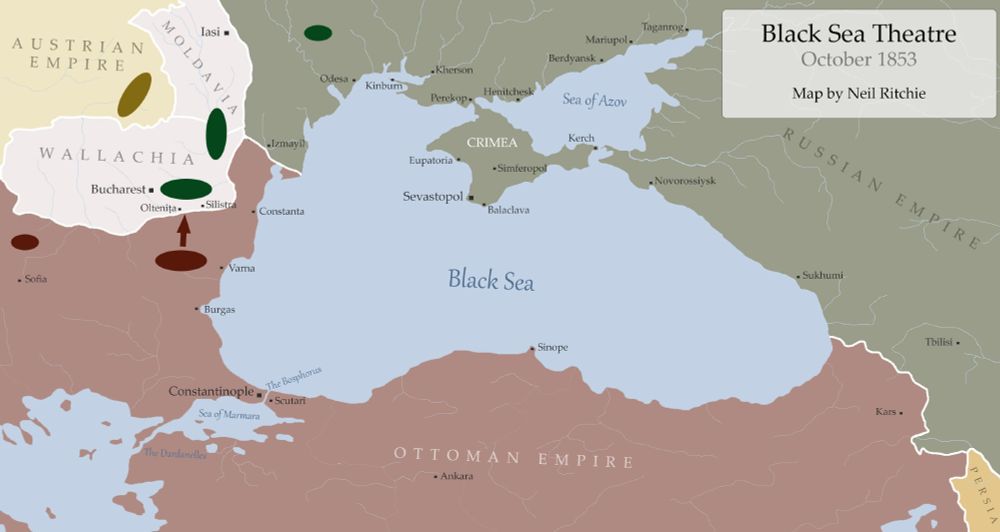
October 14, 2025 at 9:22 AM
14 October 1853: At the request of the Ottomans, the British and French fleets left Besika Bay and transited the Dardanelles as the Ottoman army prepared to engage Russian forces occupying Wallachia. The Austrian army's mobilisation against Russia continued.
12 October 1854: British commander Lord Raglan issued instructions for the army to prepare for a winter campaign in the Crimea and ordered fuel to be stockpiled at Scutari. The French commander Canrobert issued similar instructions. The grand raid to seize Sevastopol would last longer than expected.

October 12, 2025 at 6:40 PM
12 October 1854: British commander Lord Raglan issued instructions for the army to prepare for a winter campaign in the Crimea and ordered fuel to be stockpiled at Scutari. The French commander Canrobert issued similar instructions. The grand raid to seize Sevastopol would last longer than expected.
7 October 1855: British and French warships set sail from Kameisch Bay in the Crimea bound for a rendezvous off Odessa before sailing to their objective of Kinburn Fort, which guarded the Bug and Dneiper rivers and the access to the Russian shipyards at Nikolaev.

October 7, 2025 at 10:22 AM
7 October 1855: British and French warships set sail from Kameisch Bay in the Crimea bound for a rendezvous off Odessa before sailing to their objective of Kinburn Fort, which guarded the Bug and Dneiper rivers and the access to the Russian shipyards at Nikolaev.
5 October 1853: Backed by British and French fleets in the Dardanelles, the Ottoman Empire declared war on Russia after issuing an ultimatum to St Petersburg to remove its armies from the principalities of Wallachia and Moldavia. It began what became known as the Crimean War.

October 5, 2025 at 2:24 PM
5 October 1853: Backed by British and French fleets in the Dardanelles, the Ottoman Empire declared war on Russia after issuing an ultimatum to St Petersburg to remove its armies from the principalities of Wallachia and Moldavia. It began what became known as the Crimean War.
1 October 1854: To assist in the siege of Sevastopol, the Royal Navy began landing the Naval Brigade and 50 naval guns at Balaklava. Made up of Royal Marines and sailors from the fleet, the brigade was commanded by Captain Stephen Lushington of HMS Albion.

October 1, 2025 at 10:00 AM
1 October 1854: To assist in the siege of Sevastopol, the Royal Navy began landing the Naval Brigade and 50 naval guns at Balaklava. Made up of Royal Marines and sailors from the fleet, the brigade was commanded by Captain Stephen Lushington of HMS Albion.
29 September 1854: The Royal Navy began landing the Royal Marine Brigade at Balaklava to defend the port. 1,216 Royal Marines, under Lieutenant-Colonel Thomas Hurdle, would be landed over three days and incorporated into the army.

September 29, 2025 at 10:17 AM
29 September 1854: The Royal Navy began landing the Royal Marine Brigade at Balaklava to defend the port. 1,216 Royal Marines, under Lieutenant-Colonel Thomas Hurdle, would be landed over three days and incorporated into the army.
28 September 1854: The Allies established camp on the plateau before Sevastopol while the heavy siege guns continued to be landed. A local Tatar reported a large Russian army was present in the interior of the Crimea. French engineers cut off the water supply to Sevastopol.
📸 Roger Fenton, 1855
📸 Roger Fenton, 1855

September 28, 2025 at 9:26 AM
28 September 1854: The Allies established camp on the plateau before Sevastopol while the heavy siege guns continued to be landed. A local Tatar reported a large Russian army was present in the interior of the Crimea. French engineers cut off the water supply to Sevastopol.
📸 Roger Fenton, 1855
📸 Roger Fenton, 1855
26 September 1854: The Allied army crossed the Tractir Bridge over the Chernaya River to the east of Sevastopol. British forces moved to occupy the small port of Balaklava as their supply base, while the French secured the more spacious port of Kamiesch as their base.

September 26, 2025 at 11:28 AM
26 September 1854: The Allied army crossed the Tractir Bridge over the Chernaya River to the east of Sevastopol. British forces moved to occupy the small port of Balaklava as their supply base, while the French secured the more spacious port of Kamiesch as their base.
25 September 1854: The Allied army came within sight of Sevastopol. Ruling out a direct assault on Sevastopol from the north, the Allied commanders began a flank march around it to lay siege from the south and moved to secure the ports of Balaklava and Kamiesch.

September 25, 2025 at 10:12 AM
25 September 1854: The Allied army came within sight of Sevastopol. Ruling out a direct assault on Sevastopol from the north, the Allied commanders began a flank march around it to lay siege from the south and moved to secure the ports of Balaklava and Kamiesch.
23 September 1854: The Allies moved out from their camps at the Alma and continued on towards Sevastopol, halting at the Katcha River. On the same day, the Russians continued to scuttle ships of their Black Sea Fleet to block the entrance to Sevastopol harbour.

September 23, 2025 at 8:18 PM
23 September 1854: The Allies moved out from their camps at the Alma and continued on towards Sevastopol, halting at the Katcha River. On the same day, the Russians continued to scuttle ships of their Black Sea Fleet to block the entrance to Sevastopol harbour.
An officer of the 1st Battalion, Cameronians (Scottish Rifles) with a horse of the 9th (2nd Pomeranian) Uhlans, which had been captured in the cavalry action at Nery on 1st September 1914.
📸 Robert Cotton Money / IWM (Q 51483)
📸 Robert Cotton Money / IWM (Q 51483)

September 21, 2025 at 10:08 AM
An officer of the 1st Battalion, Cameronians (Scottish Rifles) with a horse of the 9th (2nd Pomeranian) Uhlans, which had been captured in the cavalry action at Nery on 1st September 1914.
📸 Robert Cotton Money / IWM (Q 51483)
📸 Robert Cotton Money / IWM (Q 51483)
20 September 1854: The Allied army attacked Prince Alexander Menshikov's Russian army occupying the heights overlooking the River Alma in the Crimea. In less than three hours, the Russians were dislodged at the bayonet point, the Highlanders firing their rifles "within a yard of the Russians".

September 20, 2025 at 7:57 PM
20 September 1854: The Allied army attacked Prince Alexander Menshikov's Russian army occupying the heights overlooking the River Alma in the Crimea. In less than three hours, the Russians were dislodged at the bayonet point, the Highlanders firing their rifles "within a yard of the Russians".
19 September 1854: As the Allied army set off towards Sevastopol, the British advance guard encountered Russian cavalry at the Bulganak River which were engaged by Lord Cardigan's Light Cavalry Brigade supported by 'C' Troop Royal Horse Artillery, with Riflemen riding on the guns into action.

September 19, 2025 at 5:35 PM
19 September 1854: As the Allied army set off towards Sevastopol, the British advance guard encountered Russian cavalry at the Bulganak River which were engaged by Lord Cardigan's Light Cavalry Brigade supported by 'C' Troop Royal Horse Artillery, with Riflemen riding on the guns into action.
14 September 1854: The Allied expeditionary force of 30,000 French, 26,000 British, and 5,000 Ottoman troops began landing unopposed in the Crimea at Kalamita Bay, 25 miles north of the city and naval base of Sevastopol, the objective of the Allied forces.

September 14, 2025 at 3:34 PM
14 September 1854: The Allied expeditionary force of 30,000 French, 26,000 British, and 5,000 Ottoman troops began landing unopposed in the Crimea at Kalamita Bay, 25 miles north of the city and naval base of Sevastopol, the objective of the Allied forces.
Pussy and Mickey, mascot cats of the Polish Merchant Navy ship SS Kordecki, checking out the ship's Oerlikon 20mm cannon.

September 13, 2025 at 6:12 PM
Pussy and Mickey, mascot cats of the Polish Merchant Navy ship SS Kordecki, checking out the ship's Oerlikon 20mm cannon.
On 13 September 1653, a Cromwellian flotilla anchored off Duart Castle, Isle of Mull, was ravaged by a storm, which sank three warships, including the Swan. The ships were supporting Colonel Ralph Cobbett's expedition to subdue Clan Maclean during the Earl of Glencairn's Royalist uprising.

September 13, 2025 at 6:02 PM
On 13 September 1653, a Cromwellian flotilla anchored off Duart Castle, Isle of Mull, was ravaged by a storm, which sank three warships, including the Swan. The ships were supporting Colonel Ralph Cobbett's expedition to subdue Clan Maclean during the Earl of Glencairn's Royalist uprising.
James Robertson's photo of the dry docks at Sevastopol before their destruction by British and French engineers over the winter of 1855-56. After an 11-month siege, the Russians evacuated Sevastopol on 9 September 1855, allowing the Allied army to take control of the city and Black Sea Fleet base.

September 9, 2025 at 8:03 PM
James Robertson's photo of the dry docks at Sevastopol before their destruction by British and French engineers over the winter of 1855-56. After an 11-month siege, the Russians evacuated Sevastopol on 9 September 1855, allowing the Allied army to take control of the city and Black Sea Fleet base.
The "Lily" floating airstrip during trials off Lamlash, Isle of Arran, on 30 August 1945. Created by R. M. Hamilton, it consisted of hexagonal buoyancy drums connected to form a flexible landing surface. It was intended to support the planned invasion of Japan.
📸 Lt D. C. Oulds / IWM (A 30255)
📸 Lt D. C. Oulds / IWM (A 30255)

August 30, 2025 at 4:48 PM
The "Lily" floating airstrip during trials off Lamlash, Isle of Arran, on 30 August 1945. Created by R. M. Hamilton, it consisted of hexagonal buoyancy drums connected to form a flexible landing surface. It was intended to support the planned invasion of Japan.
📸 Lt D. C. Oulds / IWM (A 30255)
📸 Lt D. C. Oulds / IWM (A 30255)
The 9th (Highlanders) Battalion, Royal Scots (Lothian Regiment) at Leith following their mobilisation in August 1914. At the outbreak of the war, they formed part of the Lothian Brigade (TF). The 1/9th Battalion would deploy to France in February 1915 and would first see action at Second Ypres.
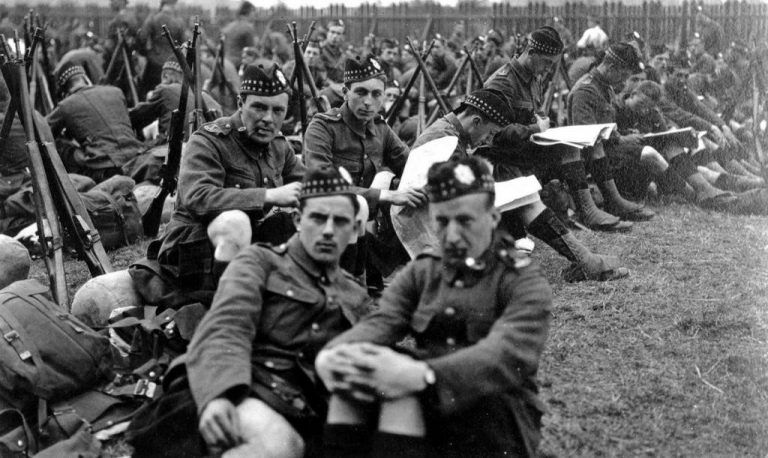
August 7, 2025 at 9:50 AM
The 9th (Highlanders) Battalion, Royal Scots (Lothian Regiment) at Leith following their mobilisation in August 1914. At the outbreak of the war, they formed part of the Lothian Brigade (TF). The 1/9th Battalion would deploy to France in February 1915 and would first see action at Second Ypres.
The departure of the 1/5th (The Sutherland and Caithness) Battalion, Seaforth Highlanders from Wick railway station on 6 August 1914, heading for Bedford. The battalion was part of the Territorial Force and formed part of the Seaforth & Cameron Brigade.
📸 IWM (HU 94294)
📸 IWM (HU 94294)
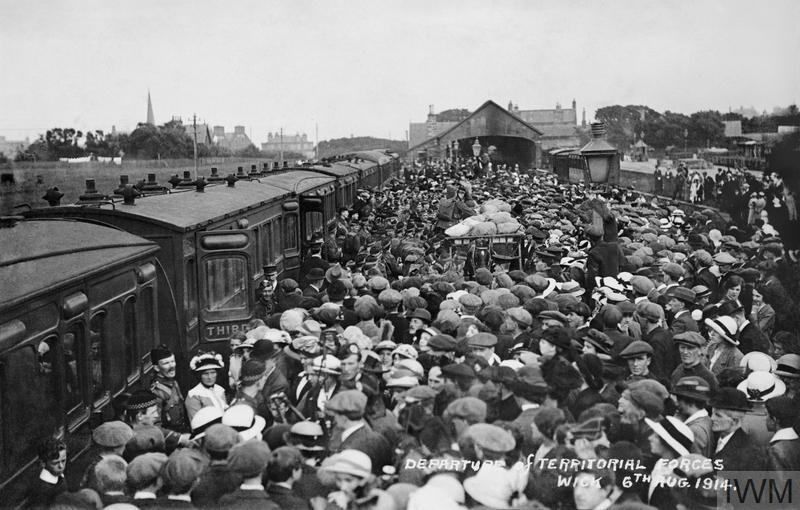
August 6, 2025 at 1:04 PM
The departure of the 1/5th (The Sutherland and Caithness) Battalion, Seaforth Highlanders from Wick railway station on 6 August 1914, heading for Bedford. The battalion was part of the Territorial Force and formed part of the Seaforth & Cameron Brigade.
📸 IWM (HU 94294)
📸 IWM (HU 94294)
Captain Thomas Sheridan Riddell-Webster of the 1st Battalion, Cameronians (Scottish Rifles) at Maryhill Barracks in Glasgow in early August 1914. The 1st Battalion would leave Glasgow by train for Southampton on 13 August and would embark on SS Caledonia the following day.
📸 IWM (Q 51468)
📸 IWM (Q 51468)
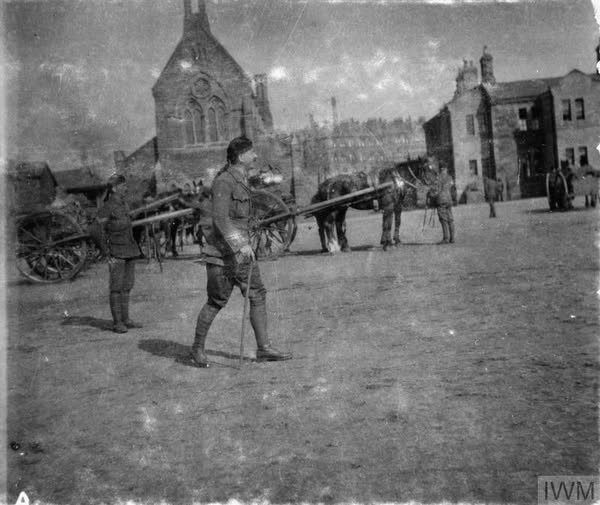
August 6, 2025 at 11:31 AM
Captain Thomas Sheridan Riddell-Webster of the 1st Battalion, Cameronians (Scottish Rifles) at Maryhill Barracks in Glasgow in early August 1914. The 1st Battalion would leave Glasgow by train for Southampton on 13 August and would embark on SS Caledonia the following day.
📸 IWM (Q 51468)
📸 IWM (Q 51468)
Boeing VC-25A 29000 of the US Air Force's 89th Airlift Wing, Presidential Airlift Group (PAG) at Prestwick Airport
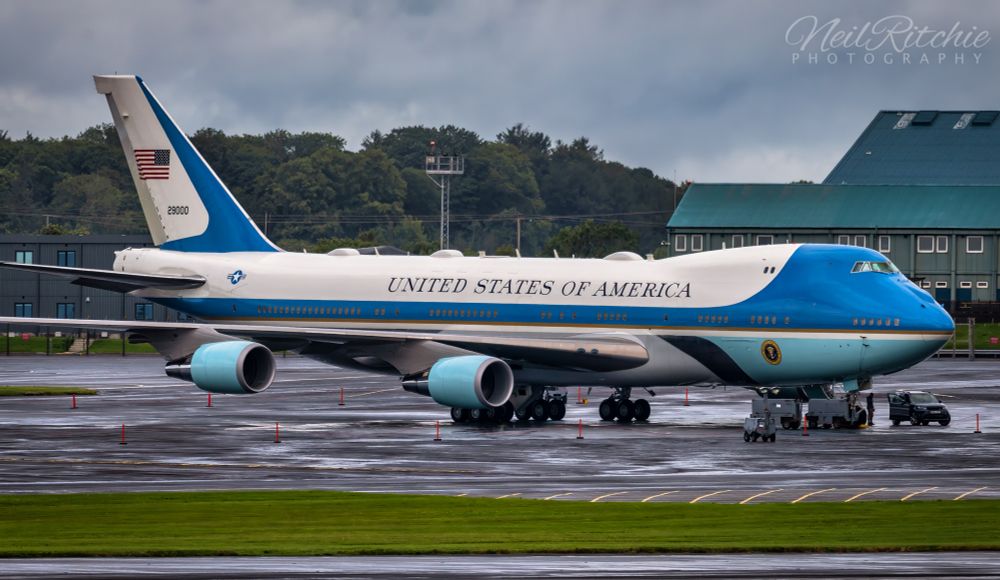
July 27, 2025 at 7:52 PM
Boeing VC-25A 29000 of the US Air Force's 89th Airlift Wing, Presidential Airlift Group (PAG) at Prestwick Airport
Arthur Wellesley, Duke of Wellington, on his horse Copenhagen, chatting to an innkeeper while troopers of the Life Guards water their horses in the town of Waterloo on the evening of 17 June 1815. Painting 'On the eve of Waterloo' by Robert Alexander Hillingford.
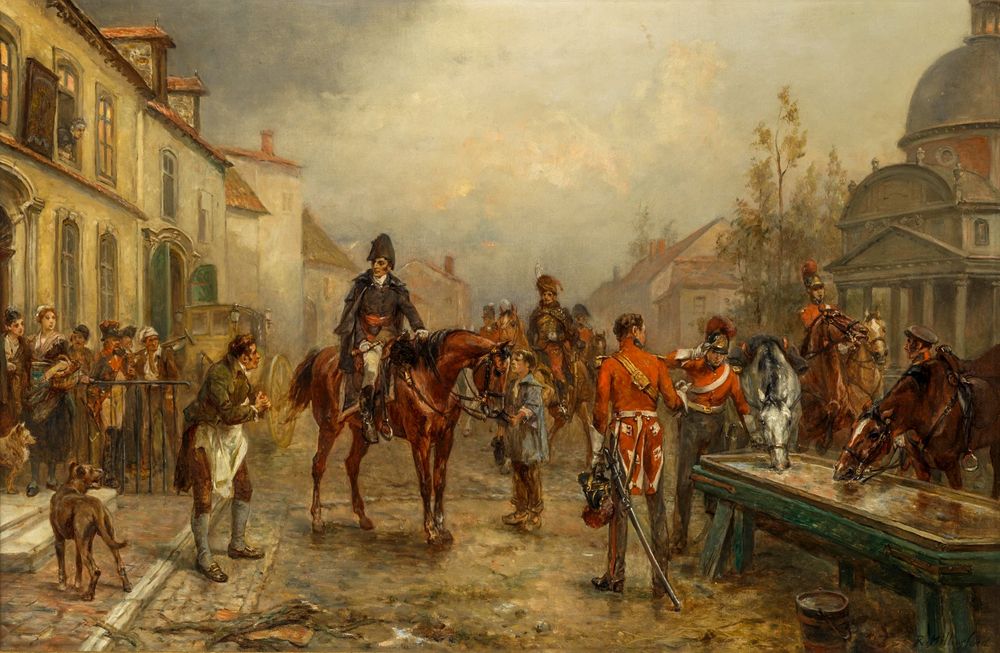
June 17, 2025 at 10:23 PM
Arthur Wellesley, Duke of Wellington, on his horse Copenhagen, chatting to an innkeeper while troopers of the Life Guards water their horses in the town of Waterloo on the evening of 17 June 1815. Painting 'On the eve of Waterloo' by Robert Alexander Hillingford.
Royal Marines from 42 Commando working with the embarked squadrons of 820 and 815 onboard HMS Prince of Wales conduct fast rope training serials on Operation Highmast. Photo by LPhot Bill Spurr / UK MOD © Crown copyright 2025.
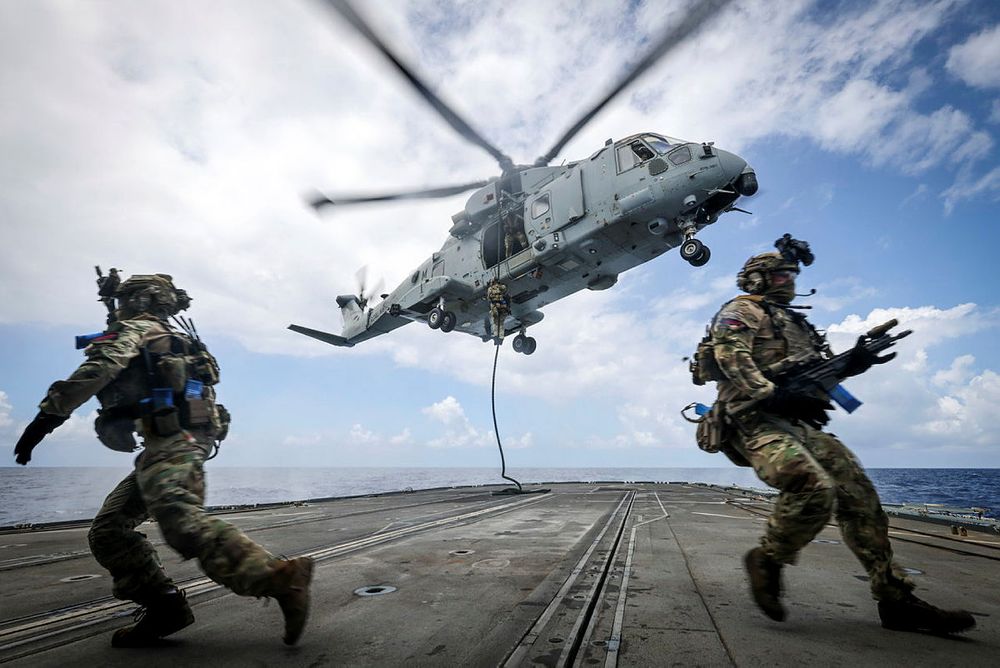
June 13, 2025 at 1:21 PM
Royal Marines from 42 Commando working with the embarked squadrons of 820 and 815 onboard HMS Prince of Wales conduct fast rope training serials on Operation Highmast. Photo by LPhot Bill Spurr / UK MOD © Crown copyright 2025.
Colonel James Campbell's Dragoons (Royal Scots Greys) with their distinctive mitre caps guarding Spanish and Highland captives at the battle of Glen Shiel, fought on 10 June 1719. 3 Troops of the Greys saw action under Major Patrick Robertson. Painting by Lionel Edwards.

June 10, 2025 at 6:44 PM
Colonel James Campbell's Dragoons (Royal Scots Greys) with their distinctive mitre caps guarding Spanish and Highland captives at the battle of Glen Shiel, fought on 10 June 1719. 3 Troops of the Greys saw action under Major Patrick Robertson. Painting by Lionel Edwards.

